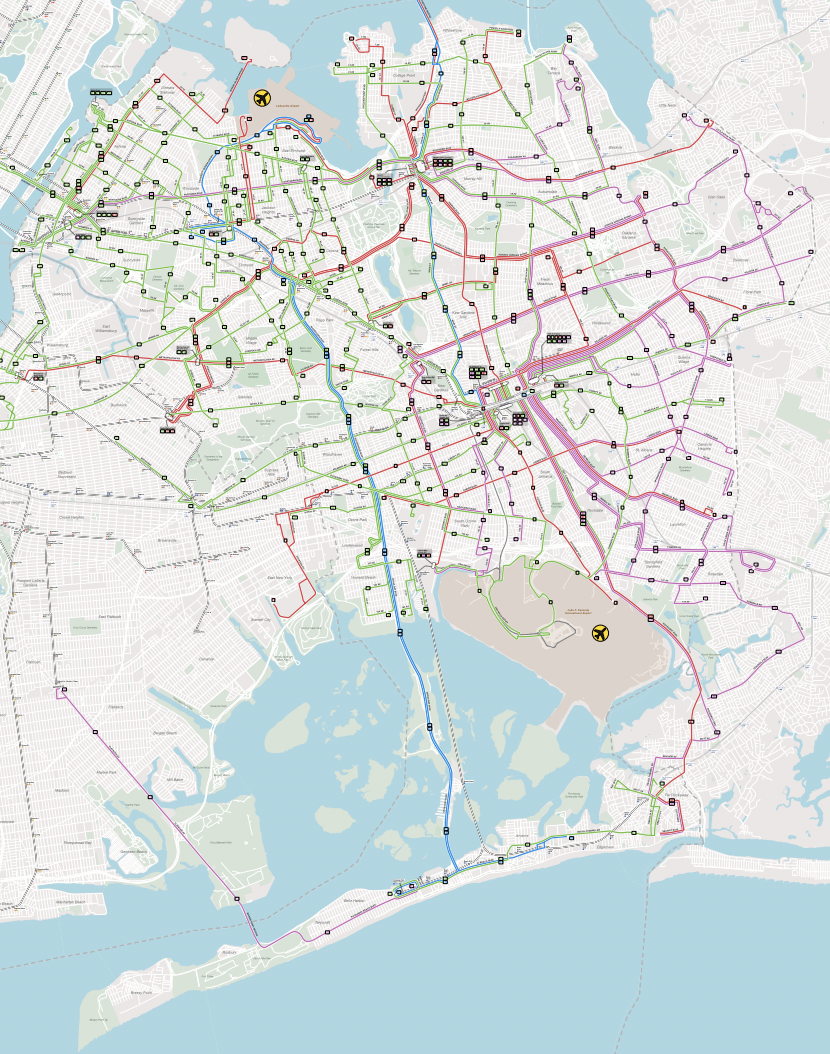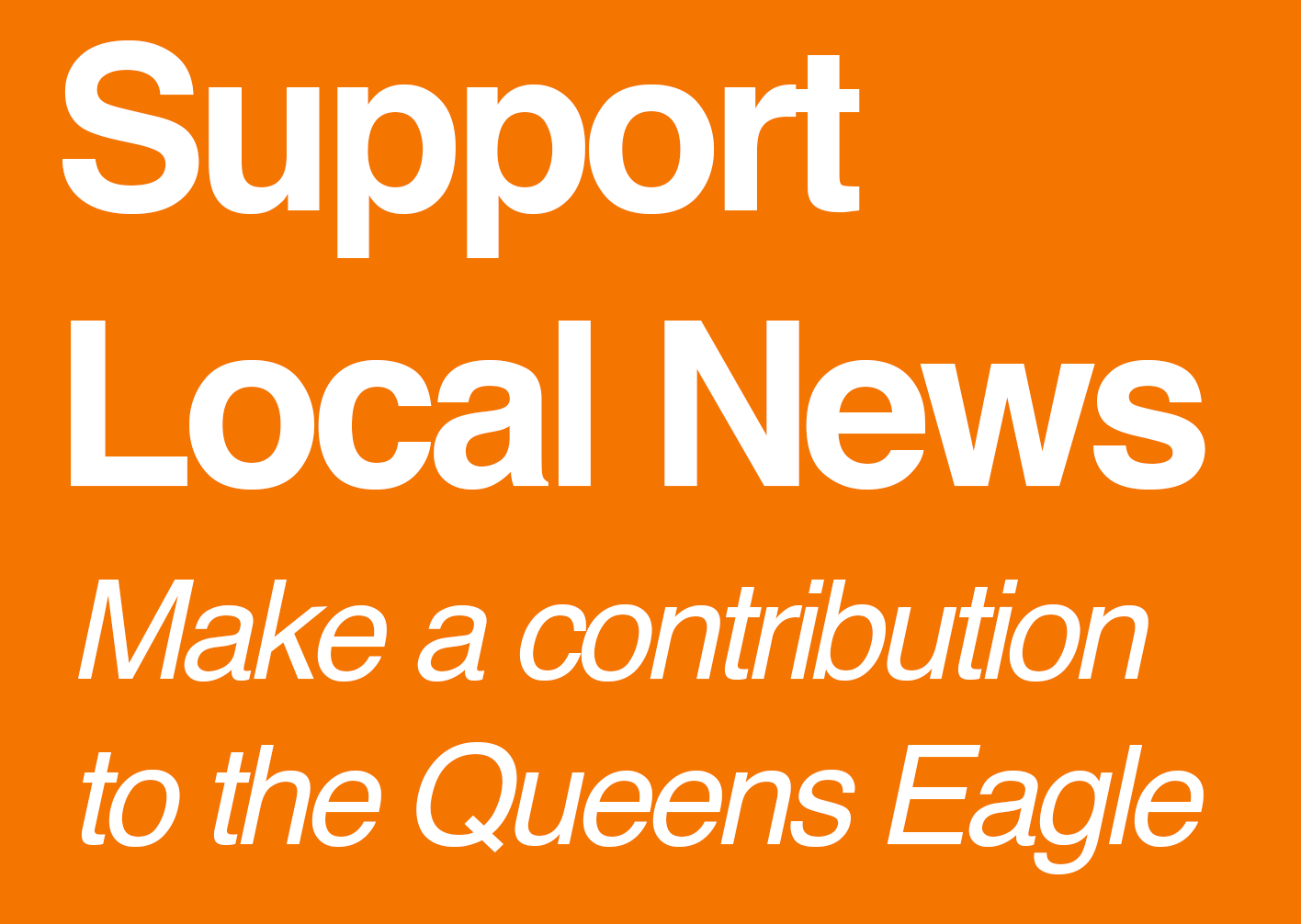MTA holds one last hearing but says new Queens bus map is final
/The MTA collected feedback from riders about its redesigned Queens bus network one last time last week. Photo via the MTA
By Ryan Schwach
The MTA gave Queens residents one last look at their new bus routes before the plan, which has been in the works for over half a decade, heads to its final stage. Despite taking questions and feedback on the map that has undergone countless minor and major changes over the years, the MTA said the map, as it currently stands, will move full steam ahead.
At a virtual “informational session” last Wednesday night, the MTA laid out the specifics of the plan to redraw Queens’ bus map, and took questions from residents on specific routes and potential issues they saw with the new routes.
However, while the MTA heard some feedback from locals on the current map, the agency does not plan on making any more changes before it heads to the MTA board for a vote in the coming months.
With the plan finally approaching its last stop, so too comes the end to a multi-year exercise to redraw Queens’ bus routes, which included an entire reset of the process post-COVID.
“No other borough is as reliant or dependent on great bus service quite like Queens,” said the Frank Annicaro, the senior vice president of the New York City Transit Department of Buses and MTA Bus Company. “Queens is home to the largest bus network out of the five boroughs with 800,000 daily riders. If it was its own bus network, it would rival Chicago for the third largest bus system in this nation. You deserve a system that takes you where you want to go, not designed in the 1950s.”
In order to right that discrepancy, the MTA launched an effort in 2019 to throw out the Queens bus route map as it was and redraw it from scratch.
That, however, did not go so well.
When the public got its chance to weigh in, they tore it apart, pointing out issues with the new routes, and the elimination of old ones.
Following the pandemic, the MTA started over again, this time choosing to simply rework the current maps by tweaking routes and stop locations to increase frequency and service.
That resulted in the new draft plan unveiled in December 2023 on Queens Boulevard.
That plan received similarly negative feedback from locals and elected officials alike.
Southeast Queens City Councilmember Selvena Brooks-Powers and State Senator Leroy Comrie opposed many of the details.
“In trying to take care of our community, they did too much,” Comrie said.
Other officials in other parts of Queens including State Senator John Liu penned a letter to the MTA calling for changes to the plan.
“We need more bus service, express bus service, as well as local bus service everywhere,” Liu said at the time. “There are also examples I have cited in my letter to the MTA where bus services are being made faster, but because these certain lines are bypassing heavily traveled areas, commercial corridors, senior centers and religious facilities.
In July 2024, during a public hearing on the plan at Borough Hall, locals blasted the MTA’s decision to reroute buses, and eliminate stops. They said the map largely traded convenience for bus speed.
The MTA board will vote in the coming months to implement the new Queens bus maps, the end of a process that took half a decade. Screenshot via the MTA
“We're concerned that stops will be spaced further apart,” said Douglaston Civic Association member Barbera Linton at that July hearing. “The concern here is the impact on the elderly and disabled in particular…It would be difficult to negotiate those stretches of Northern Boulevard on foot in both directions.”
Following that onslaught of pushback, the MTA once again returned to the drawing board, and returned this last December with the “proposed final draft plan addendum.”
Overall, the plan includes 11 new routes and several specific route changes intended to increase service quality, speed and bus frequency boroughwide.
During the unveiling of the new plan, also at Borough Hall, officials shot down worries that this plan would have the same fate as the previous two attempts.
“We're confident that we got it nailed down,” New York City Transit President Demetrious Crichlow said.
Borough President Donovan Richards agreed.
“This plan needed to be community centered, I believe it is,” he said. “I've spoken to colleagues from all parts of Queens, and I feel relatively good about where we're headed.”
With that in mind, officials announced their intentions to hold one more meeting to inform locals on new maps, but stressed it was unlikely the meeting would result in any more changes.
Last week at that meeting, residents got their last look at the plan before it ultimately will go forward to the MTA board.
The hearing, held entirely on Zoom, was an especially controlled process with MTA officials asking other MTA officials “frequently asked questions,” with some immediate questions being asked in the chat lobby.
The questions mostly centered around issues with specific routes.
One elderly commenter said the elimination of her bus stop in Astoria on the Q69 would make her life much more difficult.
“I prefer buses and have to travel with a cane due to my condition and eliminating this stop and also getting up [the] Crescent [Street] hill will be a painful challenge,” she said. “Do the consultants actually travel on the buses for fieldwork or are most of these decisions made in offices?”
The MTA answered the question, and all stop elimination questions with the same response; that stop elimination will hopefully increase bus speeds.
“Increasing bus stop spacing speeds up buses and improves reliability,” said an MTA project manager. “ Each stop removed saves about 20 seconds on the bus's travel time, and that's why bus stop balancing is a helpful tool as a part of redesigns.”
The MTA added that the elimination of stops on all the routes where it happened follows the feedback from locals.
“Since the new draft plan, the average stop spacing by route has decreased based on the public feedback and comments for flagging the critical stops and connections,” MTA officials said. “We carefully analyze each stop before making a decision to keep or remove it.”
Other concerns centered around specific routes, including the elimination of the entire QM3 Queens-to-Manhattan route.
“The QM3 currently serves fewer than 70 riders per day in each direction,” the MTA said. “A vast majority of the commuters in this area are better served by the Long Island railroads.”
However, despite the questions and concerns, the MTA is moving forward with the plan as it currently stands.
“There are no plans to make any changes before it is presented to the board,” a spokesperson said.
The MTA said a vote will take place before the end of March.





